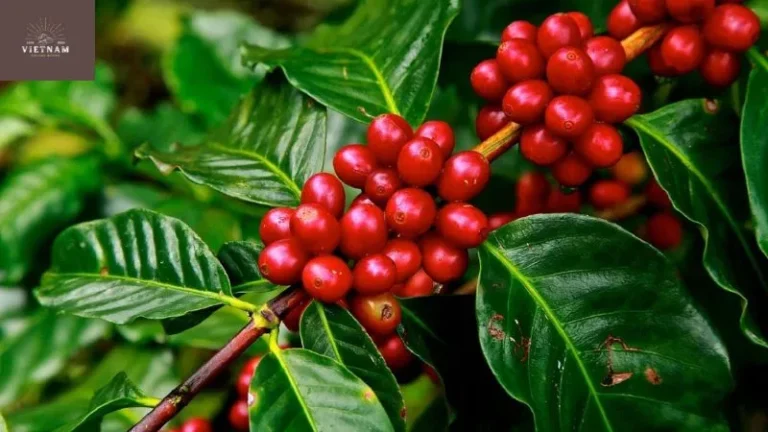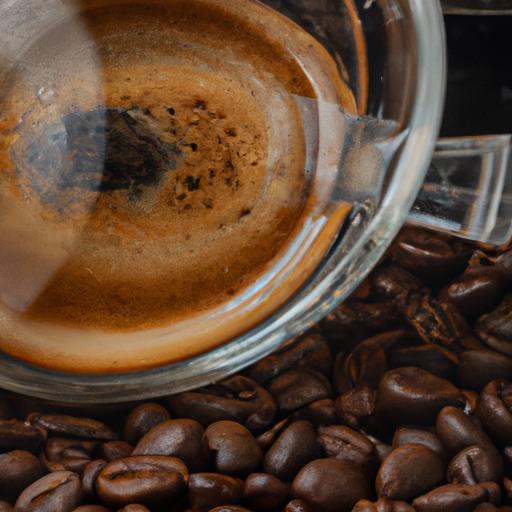I’ve always been fascinated by the incredible variety of coffee grown in Brazil.
Brazil Coffee Varieties are renowned worldwide for their exceptional quality and diverse flavors. As the largest producer of coffee in the world, Brazil boasts a rich coffee heritage that spans centuries. From the vibrant and fruity notes of Bourbon Santos to the smooth and nutty flavors of Yellow Bourbon, Brazil offers a wide array of coffee varieties that cater to every palate.
Each region in Brazil contributes its unique characteristics to the coffee, resulting in a captivating range of flavors that showcase the country’s coffee prowess. Whether you prefer a bold and robust cup or a delicate and nuanced brew, Brazil Coffee Varieties have something to offer for every coffee enthusiast.
From the rich and flavorful Bourbon to the vibrant and aromatic Catuai, there are so many unique flavors to explore.
And let’s not forget about the versatile Icatu, with its red and yellow variations.
But it doesn’t stop there – Brazil is also home to a plethora of other noteworthy varieties like Mundo Novo, Red Obatã, and Yellow Obatã.
Join me on this journey as we delve into the world of coffee varieties in Brazil.
Key Takeaways
- Red Bourbon and Yellow Bourbon are two popular coffee varieties in Brazil, with Red Bourbon being more productive and higher in quality than Typica.
- Catuai varieties, such as Yellow Catuai and Red Catuai, are known for their small stature, yellow coffee cherries, and high productivity.
- Icatu varieties, including Red Icatu and Yellow Icatu, were developed through hybridization with other coffee varieties and have been commercially available since the 1990s.
- Other notable coffee varieties in Brazil include Acaiá, Arara, Catigua, Catucai, Mundo Novo, Red Obatã, Yellow Obatã, and Oeiras. These varieties have different characteristics and are cultivated in various regions of Brazil.
Bourbon Varieties
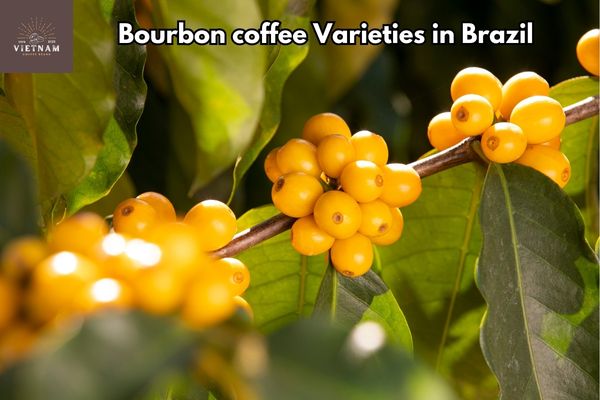
I really enjoy the unique flavors of Red Bourbon and Yellow Bourbon. These are both varieties of coffee that were bred in Brazil.
These bourbon varieties have distinct characteristics that set them apart from other coffee varieties. One important factor that affects the quality of bourbon varieties is the environment in which they are grown. The climate, soil composition, and altitude all play a role in shaping the flavors and aromas of the coffee beans.
Additionally, when comparing the yield and disease resistance of different bourbon varieties, it is evident that there are variations. Yellow Bourbon, for example, has a higher yield compared to Red Bourbon, but it is also more susceptible to certain diseases.
Understanding these differences is crucial for coffee farmers in order to make informed decisions about which bourbon varieties to cultivate.
Catuai Varieties
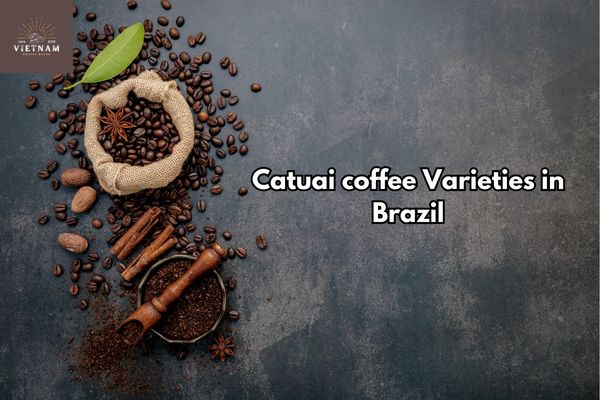
Developed as a cross between Icatu and Catuai, Catucai is a productive and resistant coffee variety. It has gained popularity among coffee farmers for its high yield and ability to withstand pests and diseases.
When comparing different Catuai varieties, it is important to consider their yield and resistance to pests and diseases. Some Catuai varieties may have higher yield but lower resistance to certain pests and diseases, while others may have lower yield but higher resistance.
Additionally, environmental factors play a significant role in the flavor profiles of Catuai coffees. Factors such as altitude, temperature, and soil composition can influence the taste and aroma of the coffee beans. Therefore, it is crucial for coffee farmers to carefully consider these factors when cultivating Catuai varieties.
Icatu Varieties
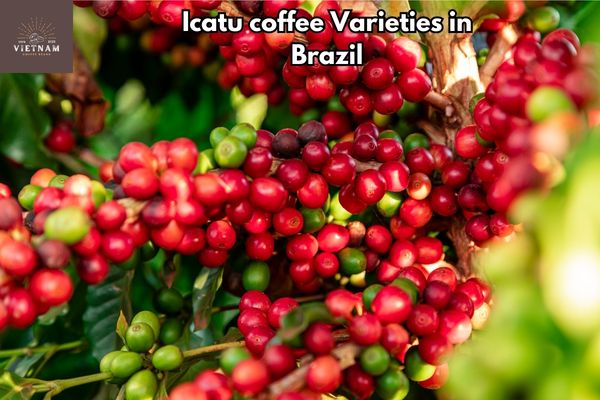
Obatã is a coffee variety that has a high resistance to leaf rust and is known for its productivity.
When it comes to the IAC cultivars, Yellow Icatu and Red Icatu, a comparative analysis reveals interesting findings in terms of yield and disease resistance.
Both Yellow Icatu and Red Icatu were developed through a careful breeding process at the Campinas Agronomic Institute (IAC).
Yellow Icatu, derived from the Yellow Icatu lineage, and Red Icatu, derived from the Red Icatu lineage, were released for commercial use in 1992.
These cultivars have shown great potential in terms of yield, with productivity levels comparable to other high-yielding varieties. Additionally, they exhibit a strong resistance to diseases, making them a valuable choice for coffee farmers.
The exploration of the breeding process behind the development of Yellow Icatu and Red Icatu showcases the dedication and expertise of the researchers at IAC in creating improved coffee varieties.
Other Varieties
The Acaiá variety, selected from Mundo Novo, is a hearty and productive coffee plant that has large cherries and beans. Acaiá is known for its good yield and sturdy plants, making it a popular choice among coffee growers.
One of the unique characteristics of Acaiá is its susceptibility to coffee leaf rust, which requires careful management to prevent the spread of the disease. In terms of flavor profile, Acaiá is known for its balanced and smooth taste, with notes of chocolate and caramel.
Moving on to the Arara variety, it is a natural cross between Obatã and Yellow Catuai. Arara is a highly productive and resistant coffee plant, making it suitable for areas with drought and leaf rust challenges.
From an agronomic perspective, Arara is an attractive choice due to its adaptability and resilience. In terms of flavor, Arara offers a delightful cup with fruity and floral notes, along with a hint of acidity.
When comparing the productivity and disease resistance of Catigua and Catucai, both varieties have shown promising traits. Catigua, a cross between Yellow Catuai and Timor Hybrid, is known for its vigorous growth and high productivity.
On the other hand, Catucai, developed as a cross between Icatu and Catuai, exhibits high vegetative vigor and resistance to coffee rust. While both varieties have their strengths, Catucai tends to have a moderate resistance to coffee rust and does not experience large leaf fall, making it a favorable choice for coffee farmers.
Mundo Novo
I really enjoy the flavor profile of Mundo Novo coffee. Its rich and balanced taste with hints of chocolate and fruit is delightful. When comparing Mundo Novo to Red Bourbon, there are some distinct differences in their flavor profiles.
Mundo Novo coffee tends to have a smoother and more rounded taste. On the other hand, Red Bourbon has a slightly more intense and complex flavor. The history of Mundo Novo coffee dates back to a natural cross between Sumatra and Red Bourbon. It was selected and propagated in the municipality of Mundo Novo in Sao Paulo state.
The cultivation techniques for Mundo Novo involve careful attention to soil conditions, altitude, and climate. These factors greatly influence the taste and quality of the coffee beans. Overall, Mundo Novo coffee offers a delightful drinking experience with its unique flavor profile and rich history.
Red Obatã
After discussing the Mundo Novo variety, let’s move on to the Red Obatã variety. As a coffee grower with years of experience, I can confidently say that Red Obatã has several advantages over other varieties.
Here are the key advantages of Red Obatã:
Resistance to leaf rust: Red Obatã is known for its high resistance to leaf rust, a common disease that can devastate coffee crops. This resistance helps ensure a healthy and productive harvest.
High production levels: Red Obatã has production levels that can rival those of Red Catuai, making it a highly productive variety. This means that you can expect a good yield from your Red Obatã plants.
Productivity in the first harvests: Red Obatã excels in its early harvests, meaning that you can start enjoying the fruits of your labor sooner. This can be particularly advantageous for growers who want to see a return on their investment quickly.
Suitable growing conditions: Red Obatã thrives in a range of growing conditions, but it particularly performs well in regions with altitudes between 800 and 1,200 meters above sea level. It also prefers well-drained soils with a pH level between 5.5 and 6.5.
With these advantages and the right growing conditions, Red Obatã can be a great choice for coffee growers looking for a productive and resilient variety.
Yellow Obatã
Developed through a natural cross between Red Obatã and Yellow Catuai, Yellow Obatã is a leaf rust resistant coffee variety that offers similar characteristics to Obatã.
As a knowledgeable coffee enthusiast, I can tell you that Yellow Obatã has a unique flavor profile and cupping characteristics that set it apart from other leaf rust resistant varieties.
In the cup, Yellow Obatã exhibits a vibrant acidity with notes of citrus and tropical fruits. It has a medium body and a sweet, caramel-like finish.
When comparing it to other leaf rust resistant varieties, Yellow Obatã stands out for its exceptional cup quality and complex flavor profile. Its resistance to leaf rust makes it a reliable and sustainable choice for coffee farmers, ensuring a consistent supply of high-quality beans.
Frequently Asked Questions For Topic: “Brazil Coffee Varieties”
Conclusion
After conducting extensive research on the different varieties of coffee grown in Brazil, I can confidently conclude that Brazil has a rich and diverse coffee culture.
From the high-quality Bourbon varieties, including the productive and renowned Red Bourbon and the intriguing Yellow Bourbon, to the crossbred Catuai with its yellow and red variations, and the hybrid Icatu varieties, Brazil offers a wide range of flavors and aromas in its coffee production.
Additionally, the other notable varieties such as Acaiá, Arara, Catigua, Catucai, Mundo Novo, Red Obatã, Yellow Obatã, and Oeiras add further depth to Brazil’s coffee landscape.
The development and release of the IAC cultivars, Yellow Icatu and Red Icatu, in 1992 marked another significant milestone in Brazil’s coffee industry.
With such diversity and innovation, Brazil continues to be a leader in the global coffee market.


